For a modern researcher, the Kashmir periphery might offer homogeneity of culture and economy. The reality is that the countryside has always exhibited a stratification primarily based on the land, which eventually dictated the food habits, architecture, clothing and livelihoods, writes Dr Tawseef Mushtaq
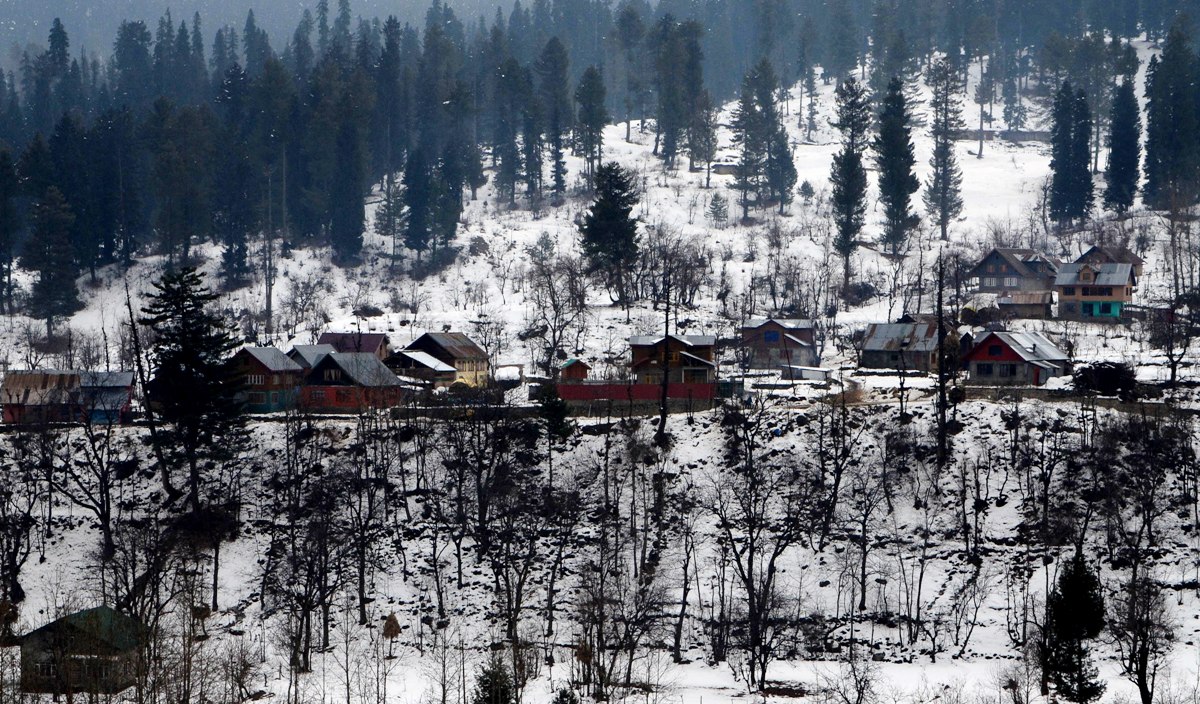
At the beginning of the Dogra period, the total number of villages in Kashmir were 2487 that had reached 8740 by 1944 and constituted 87 per cent of the population of the Valley. From the revenue records, we find that the villages were divided on the basis of the fertility of the soil, location and configuration. The other variable factors were the irrigation facility. There were villages, which suffered from floods and water-logging while other villages had uncertain water supply due to the bad terrain which caused breaches in the watercourse very often. Many other factors of configuration made a lot of difference from one circle of the village to other.
For instance, there were villages witnessing cold breezes by mountain spurs or funnel-like ravines regularly fed by very cold winds from mountain passes. All these factors compelled the authorities to examine every village independently for its potential revenue capacity. Taking these parameters into consideration, there emerged six types of villages in Kashmir falling under different circles.
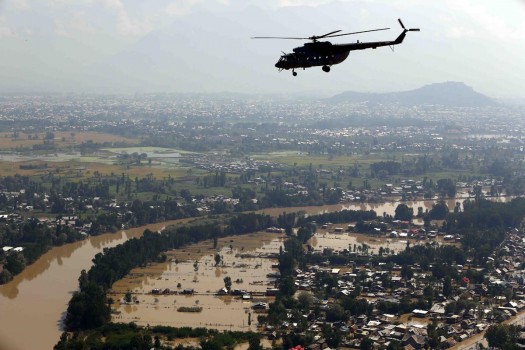
Sailabi Villages: Those villages that were inhabited in the flood-prone areas were known as Sailabi villages, also called Sambhu villages. These villages were located on the banks of rivers and lakes and sometimes extending some little distance from the water bodies. These villages were flooded annually or at longer intervals and retain sufficient moisture and nourishment to produce excellent crops without irrigation and manure. These villages grow the inferior quality of rice, because of annually erosion, but almost any other crop can be raised and especially maize and mustard grows luxuriantly.
These kinds of villages were generally less in number mostly confined to the central low-lying tracts adjoining the River Jehlum, on the shores of Wular Lake or on the banks of the tributaries of river Jehlum that were present in every tehsil. They were all more or less liable to destructive inundation, especially those villages falling in Shahr-i-Khas (main city) and Baramulla tehsil. The crops were fine in these villages but the loss of crops, livestock, houses and other goods due to floods was much in these villages. But these floods were not permanently destructive and were depositing rich silt thus compensating the damage they caused.
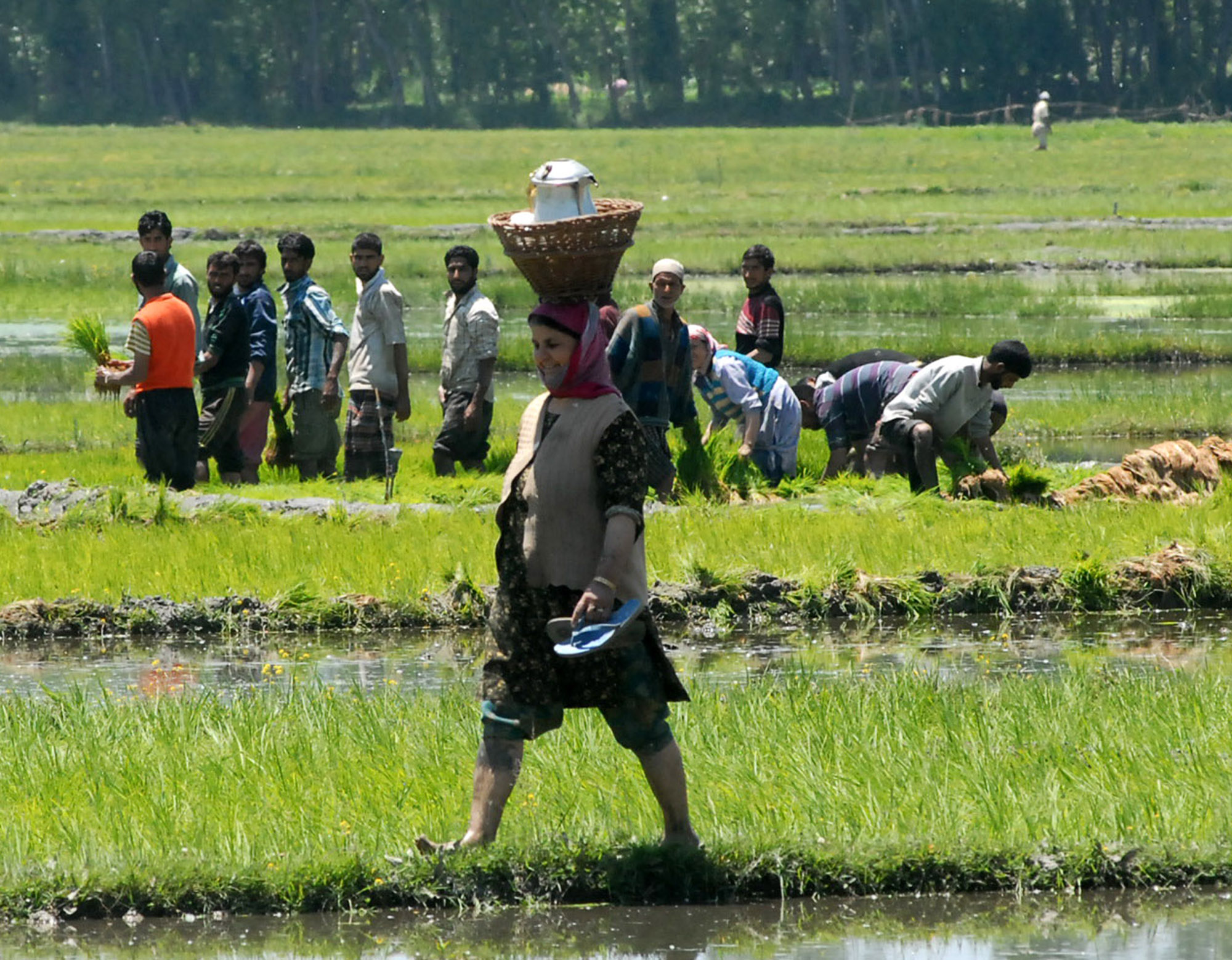
Nambal (Marshy) Villages: Villages near the sailabi village were known as Nambal villages. These villages were located in low-lying areas, consisted considerable proportion of swampy land which in years of heavy rainfall was liable to inundation. These villages were not always inundated by the rivers but some lands were outpouring water from their high water table level called limb.
The nambal villages consisted of the richest soil but were covered with water. When naturally or artificially drained maize, mustard, jaw, wheat and other crops grow well even without rain and this category of land was called nambal-i-khushki. When the water does’t dry up or leaves the soil a moist mud, rice was the only crop grown but luxuriantly and this type of land was called nambal-i-shali. Another type of land in this category was called nambai-i-bangar and these lands were too swampy to produce anything except grass and reeds.
The nambal villages were present in only two tehsils viz Shahr-i-Khas and Baramulla tehsil and were almost similar to that of the sailabi villages. The only difference was that they contain large watery areas partly uncultivable that produced valuable grasses and fodder; and partly moist and often sour land under cultivation. Therefore, people in these villages mostly depended on the miscellaneous sources of income like the rearing of livestock.
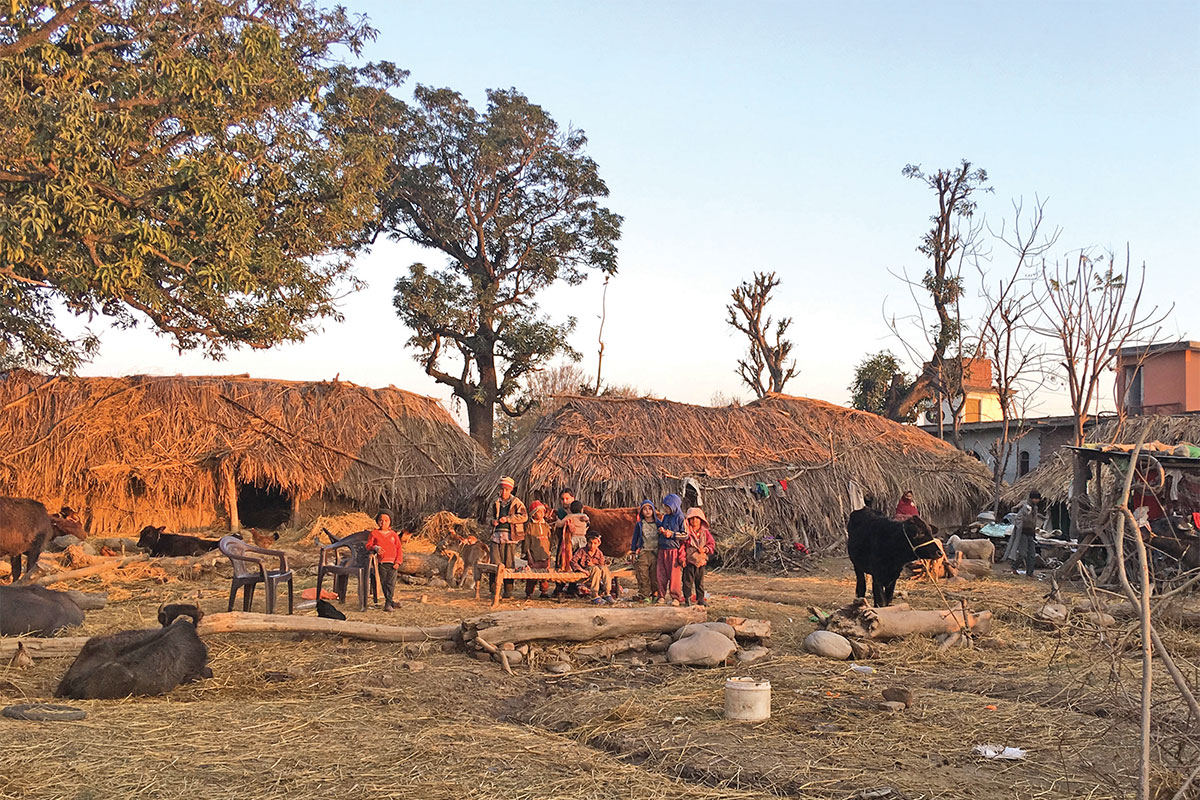
Darmiani Villages: These villages were inhabited away from the rivers and extended up to the kerawas and near to hills. It consisted of some of the best lands in the Valley that were free from the dangers of flood which the sailabi and nambal villages were facing, and also safe from the destructive cold winds from which the higher (kandi) tracts suffer. It includes all lands which were subjected to proper irrigation facilities. Lands in darmiani villages were divided into three categories on the basis of the fertility of the soil.
First, lands that grow rice year after year, and which for the most part could produce no other crop was called abi-shali or abi-awal. These lands include all the irrigated alluvial soil of the plain with the lower portions of the side valley. Under this category lands that get enough and easy water from the nearby streams through a channel (yanud) were known as sariab while lands falling at the tail of the yanud and getting limited water supply were known as paiab lands.
Second, those lands that grow rice of inferior quality and require either an occasional fallow or sowing of some other crop to rest the soil was called abi-doum. This was generally kerawa land and its inferiority was frequently due to the inadequacy of the irrigation facility.
Third, those lands which were put under special crops, like vegetables, chillies, potatoes, tobacco etc were called as abi-sagzar or maliar. These lands were less in every village but in the mir-bahri villages, this type of soil was found in abundance in which vegetables were grown to supply the city people. These lands were mostly irrigated by the lift technique called denkli, as the area around Srinagar and suburbs were consequently full of dip-wells called Dinglis.
Though they include much of the best land in Kashmir but also a good number of inferior karewas and broken ground also falls in this circle. The circle as a whole enjoyed good lands with sufficient irrigation facilities and practically security of cropping.
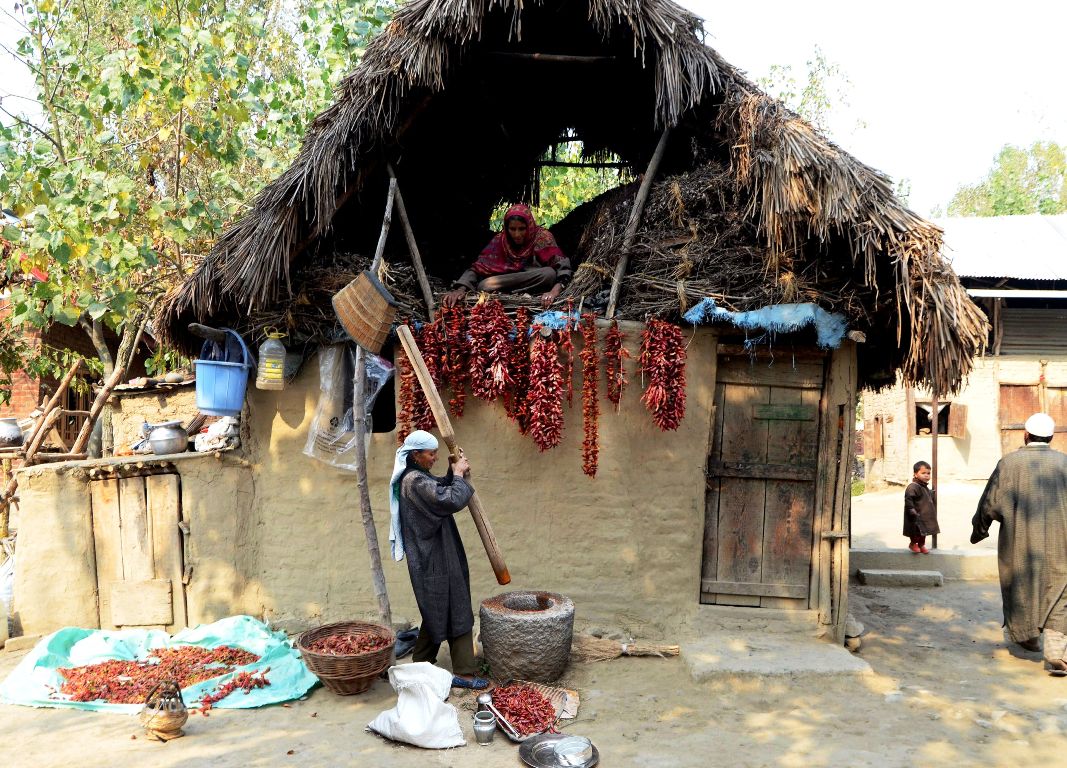
Cultivation of rice was the main occupation in darmiani villages and in Kashmir where rice was cultivable, people scarcely focused to irrigate any other crop, and full energy, day-night, was spent for it while preventing the intensive farming of most of the other crops. Although other crops, such as maize, cotton, sesame, pulses were also grown and harvested but their importance remained marginal since their market value was low as compared to the rice. Due to the fertility of soil, availability of water and maximum labour utilization, these villages were densely populated with 1007 and 675 souls to the mile of cultivation in South and North Kashmir respectively.
Along with agriculture, animal husbandry was carried to an equal extent because they were necessary for making cultivation possible and productive. Bullocks were utilized for drawing plough and crushing clods, cows and rest cattle were important as they provided manure for rice fields. As summer approached all the cattle save the requisite plough bullocks and the cows in milk were driven away to the Kandi areas, where they fed on green pastures and during winters keeping cattle was an important economic activity in these villages. The transportation of shali from the interior of villages to ghats (stations wherefrom rice was transported to Srinagar) was the responsibility of the markhabans (pony keepers). A large section of people was involved in this profession and most of them inhabited the sailabi as well as darmiani villages.
Also, the peasants were transporting mujawaza (payment of part of revenue in-kind) and other types of commodities at their backs that was a very cumbersome exercise. As compared to the kandi villages, darmiani villages were economically well-off and their standard of living was comparatively better. Rice was their staple diet and all customary service providing castes were available within or around a village.
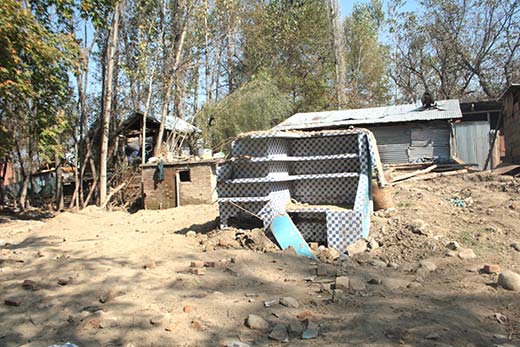
There were variations among the villages in the construction of houses and these variations were mainly as a consequence of variation in topography, availability of local materials and socio-economic conditions. The predominant material used in the construction of houses in these villages was stones, bricks, thatch and timber and these items were locally available. The Dogra rulers had imposed a strict ban on the traditional forest rights of the people. Therefore, we see that the houses constructed in darmiani villages were made of kacha bricks and domestic timber like popular and willow. Only doors and windows were made of forest timber like deodar or kairu. The houses were predominantly kacha and roofs were triangular in shape built on trusses to facilitate snow clearance. The windows were made of two latticed leaves to allow light to pass in through paper which was pasted on them as protection against cold during the winter season.
At a later stage, we also find the use of window panes. Even in a humble dwelling, there were two rooms called vot and kani. The former was used as the main room of the family. The latter was more spacious and constructed as an open hall and was reserved for use in summer. At other times, it also served as a general store. The best material used for purpose of the roof was paddy straw, but in the vicinity of the lakes, reeds were also used. The houses of comparatively well off families used to be two-storied, in which the ground floor was reserved for cattle and poultry, the first story was used by the family and the second floor was kani. A wooden granary called kuth, an erection like a huge-sentry box in which the grain was stored, form an important part of these rice-producing villages. It always stands close to the house and near to the water so that if it catches fire, water will be easily available to extinguish it.

Kandi (Hilly) Villages: The word Kandi is derived from the Dogri word Kanda which means an edge. The area was sub-mountainous or an elevated land higher than adjacent low lands. The area included all those villages that lie on the borders or close to the hills; and those villages that fall along the foot of the mountains or in long narrow pockets of the Valley. The Kandi villages were characterized by scarcity of water, numerous gullies and dry soils. As a result, agriculture in those villages was largely dependent on rains.
Besides water deficiency, kandi villages were characterized by high evaporation rates, high day temperature during summer, low humidity and high runoff that also caused soil erosion. As the water was the most important factor for crop production, insufficiency and uncertainty of rainfall often caused partial or complete failure of the crops which lead to periods of scarcities and famines. Though several small mountain streams flow down the hillside much too swiftly to be drawn upon for the purpose of irrigation but it was too difficult to change the course of these streams on these slopey lands. The available water was very chilly and the crop grown was generally of an inferior kind that also suffered from extensive damage by the cold winds that always pass there.
In these villages, there were two types of soils. The blackish or the alluvial loam of the Valley and the reddish soil of the hills but these soils were most pebbly and deficient in nitrogen and phosphorus and all land available for the cultivation was on a slope. It has been observed since ancient times that early snowfall on the mountains used to ruin the rice and do much damage to other crops in these villages.
The prolonged snowfall or continuous rains in spring used to ruin the rabi crops and prevent the timely sowing of the kharif crops. In addition to that people in these villages face constant life and property losses because they were prone to wild animals.
There was no distinction on the basis of wet or dry lands but the chief division was on the basis of rabi and kharif lands. The kharif crop was given much more importance than rabi, because the temperature of water during kharif season remained moderate which was a necessary condition for the good yield. Manure was always available in large quantity thus maize, millets, pulses, fodder and inferior rice was cultivated in these villages, as none of these crops needs more moisture than was supplied by the yearly precipitation.
Much labour was spent on the cultivation of maize, the staple crop of the people, and its production was always surplus. Maize was eaten in many ways; sometimes boiled wat and sometimes ground to make bread. It was an item in which daily transactions took place within the village and with the people living in darmiani villages. The above facts make it clear that agriculture was carried there but on a low scale and only a few items were cultivable and their fate was mostly decided by timely rains.
People in those villages were engaged with other activities in order to keep their bodies and soul together. The rearing of cattle was the dominant economic activity in the Kandi villages. Due to the availability of green fodder during the summer and plenty of hay and maize for consumption in winter households owned milch cows.

This was a lucrative and inexpensive activity as the maintenance of cows does not involve much cost. Milk and its by-products, particularly ghee and butter, were constantly in demand. The average size of a holding used to be not more than 1.25 acres and the number of bullocks remained insufficient.
Tilling of the land was done by borrowing bullocks which were employed on ploughing by turns and as such there were men who were professionals in ploughing lands and remained in demand in darmiani villages also. Rearing sheep and goat was in abundance that fetched a good market value and yielded wool twice a year. Moreover, most of the Kandi population worked as agricultural labourers in the towns, particularly in the grain markets, and often got married as khanadamad or seasonally employed in a rich-house (talbas) to perform manual work there.
Apart from animal husbandry and labour, other major source of income was the sale of trees, manufacturing and sale of agricultural tools and tool-handles. People also collected wood that was supplied to the surrounding villages that were always in demand there. Those people had frequent contacts with the people living in darmiani villages and maize and other pulses were often exchanged with the rice and other articles of importance.
People living in kandi areas largely differed from the people living in darmiani villages. Their food habits, housing, dressing and accent of language differed from each other. Being backward areas of the State, kandi areas had a low standard of living as compared to the rest of the Valley. Their houses were constructed of mud, stone and wood with few windows and doors, providing a close resemblance to military barracks. These houses were one-storied in which one side was inhabited by the family and other side was reserved for the cattle. Due to the availability of the wood in the locality roofs were made of wooden shingles and walls formed of whole wooden logs laid upon another.
The dress of Kandi people was not so much different but people had insufficient clothing and mostly used rugged, torn and old clothes that were sewn together. Upper Kandi villages were inhabited by Gujjars and Bakarwals. They were nomadic people who were mainly dependent on cattle rearing. They regularly oscillate between the southern slopes of the shiwaliks and the margs of the Central Himalayas. The structure of their houses was totally different from the rest of the people locally known as kothas and bandis.

Sarhaddi Villages: In the Valley of Kashmir there was only one sarhaddi circle that was in the Uttar Machipura. This was the distant and very mountainous area beyond the hills which remained closed from the Kashmir Valley because of the tough roads and heavy snowfall. The agricultural conditions in these high lying village tracts differ entirely from those of the Kashmir Valley and Dard language was spoken that was also different from the rest of the Valley.
It consisted of Gurez ilaqa (stretching along the Gilgit road from the Tragbal pass to the Burzil), the Tilel Valley (extending some 30 miles from Gurez and separated therefrom by high pass), the Machil ilaqa (extending beyond the hills north of the Lolab) and ten villages along the Kishanganga between Machil and Gurez. The whole circle was surrounded by the high mountains and the villages lie at a considerable elevation at 11,000 feet above sea level.
The Tilel Valley and the upper part of Gurez being the highest parts and

Machil ilaqa was the lowest tract of this circle. Paddy cultivation in this tract was not possible but the people devoted a fair amount of attention to other crops. The principal crops grown were trambu, girim, maize. Of these girim was the most highly esteemed but it grows only in the higher parts of the circle; maize on the other hand grows only in the lowest villages of Gurez and in Machil that too was of a small and inferior kind.
Even when the crops matured they were insufficient to maintain the people throughout the year, as a result, grain was always imported from Valley proper in exchange for sheep and goats through Gilgit road. The people in these villages were mainly occupied with the livestock on which their living depended that consisted of sheep, goats, horses and mules. Such was the importance of livestock that they were exempted from the payment of the usual kahcharai fees. Foreigners such as Bombas, Khaibaris, Chilasis, and Sikhs were especially numerous in parts of the Uttar Machipura tehsil.
(This was excerpted from Life in Rural Kashmir (1846-1947), an impressive research work by Tawseef Mushtaq for which he was awarded his PhD by the University of Kashmir in 2020. References to the sources in this write-up were omitted for lack of space. He teaches history at Cluster University, Kashmir.)















